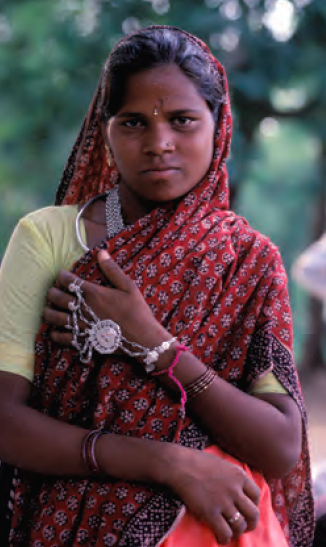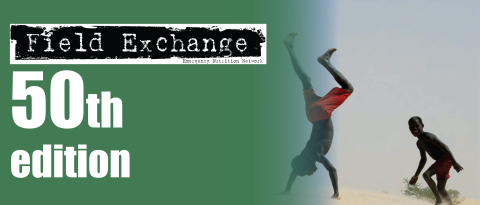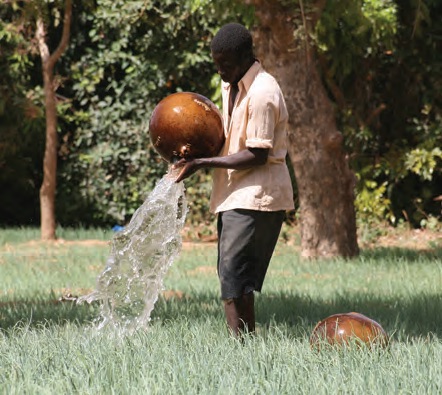Effect of Asian population-specific BMI cut-off values on malnutrition double burden estimates
Summary of research1
Location: India
What we know: India is a rapid developing economy with huge socio-economic and demographic heterogeneity and co-existence of under- and over-nutrition is one of the consequences. Asians have higher body fat at lower BMI than Caucasians. South Asians in particular have increased risk of morbidities associated with overweight and obesity
What this article adds: A recent analysis assesses the gravity of the double burden of malnutrition across 21 states of India, through a comparative analysis of traditional and Asian population-specific BMI categorisations for overweight and obesity. Analysis was based on data on ever-married women (15–49 years) from the NFHS-2 and NFHS 3. This found that Indian women err toward high BMI resulting in a co-existence of under- and overweight populations, which portray a regional pattern. With Asian population-specific cut-offs, 11 states can be classified as “double burden states”; following traditional categorisation, only four states face such dual pressure. Inequality plays a crucial role in determining the paradoxical existence of under- and over-nutrition in India.
India, a rapidly developing economy, is characterised by huge socioeconomic and demographic heterogeneity across its states. These states may, therefore, face different policy challenges in understanding the anthropometric status of its population. A recently published article aims to understand the magnitude of the double burden of malnutrition across major states in India, in terms of Body Mass Index (BMI.)2 However, studies comparing body fat and BMI have documented that Asians have higher body fat at lower BMI compared to Caucasians and that this difference can partly be attributed to body stature and composition. Researchers have suggested lower BMI cut-off points would be appropriate for Asians, since risks of cardiovascular diseases and diabetes have been found to be higher among Asians than other ethnic groups at a BMI value which is lower than the conventional overweight cut-off point.3 Also, compared to other Asian ethnicities, South Asians have showed an increased risk of morbidities associated with overweight and obesity regardless of the BMI standard used. According to the recommendations made by WHO in 2004, additional BMI trigger points of 23 and 27.5 have been identified for public health action, to identify the increased risk and higher risk respectively for overweight and obesity, particularly for an Asian continuum starting from 16 up to the BMI category of 40, while traditional BMI cut-off points should be retained as the international classification.
Data for a recently published study were drawn from the National Family Health Survey – NFHS-2 and NFHS-3, conducted 1998-1999 and 2005-6, respectively. Both surveys covered a sample representative of 99% of the Indian population. NFHS-2 collected information from 91,196 households and interviewed 89,199 ever-married women aged 15-49 years from 25 out of 26 states. NFHS-3 included 124,385 women aged 15-49 years (including never-married women) and 74,369 men aged 15-54 years from 29 states. A total of 515,507 individuals who stayed in the household the night before the interview were enumerated from the NFHS-3 sample households. As NFHS-2 collected information from ever-married women aged 15-49 years, whereas NFHS-3 incorporated all women aged 15-49 years in the survey, only ever-married women were considered in this study.
Random sampling techniques were adopted in both rounds for the NFHS. The urban and rural samples within each state were drawn separately and were allocated proportionally to the size of the state’s urban and rural populations. In each state, the rural sample was selected in two stages, with the selection of villages at the first stage, followed by the random selection of households. In urban areas, a three-stage procedure was followed. In the first stage, wards were selected with probability proportion to size (PPS) sampling, followed by random selection of census enumeration block and households.
NFHS provides information on various demographic and health indicators along with the nutritional profile. The nutritional status of adults is measured using BMI. In order to understand the dual burden of malnutrition in India, in addition to the traditional cut-off points, the study also followed the WHO 2004 expert committee for the new BMI classification for the Asian population; where a BMI of between 23 and 27.4 is classified as overweight and a BMI of more than or equal to 27.5 is considered as obese. The focus of the article is only upon the major states of India, so the manifestation of dual burden of malnutrition has been depicted for 18 states from NFHS-2 and 21 states from NFHS-3 through a comparative analysis between the traditional and Asian population-specific cut-off points. The authors defined a state as a ‘double burden of malnutrition state’ when it had at least a 20% prevalence of both underweight and overweight in adult women.
 With Asian population-specific cut-offs, 11 states can be classified as “double burden states”; following traditional categorisation, only four states are classified as such. According to surveys by the National Nutrition Monitoring Board (NNMB) conducted in rural areas of nine Indian states, the proportion of both men and women with a BMI below 18.5 has come down by 41% and 31% respectively over the period of 1975-2005. Even with this reduction, one-third of men and 36% of women in India still suffered from chronic energy deficiency in 2005. This study analysing data from NFHS-3 shows that still almost one out of three ever-married Indian women aged 15-49 years are underweight. In 16 out of 21 major states, still at least 25% of women are found to be underweight during the survey; the figures have gone up in three states.
With Asian population-specific cut-offs, 11 states can be classified as “double burden states”; following traditional categorisation, only four states are classified as such. According to surveys by the National Nutrition Monitoring Board (NNMB) conducted in rural areas of nine Indian states, the proportion of both men and women with a BMI below 18.5 has come down by 41% and 31% respectively over the period of 1975-2005. Even with this reduction, one-third of men and 36% of women in India still suffered from chronic energy deficiency in 2005. This study analysing data from NFHS-3 shows that still almost one out of three ever-married Indian women aged 15-49 years are underweight. In 16 out of 21 major states, still at least 25% of women are found to be underweight during the survey; the figures have gone up in three states.
The prevalence rates of overweight and obesity found in NFHS-3 using the conventional definition does not seem to be as significant as underweight. Although two data points are not enough to make a solid projection, assuming the established rate of changes in the nutritional dynamics during 1999-2006 will prevail over the coming years, there should be 29% of ever-married women aged 15-49 years underweight, while the prevalence of overweight and obesity will be 21.1% and 10.5% respectively using the Asian population specific cut-off in the year 2013. This means that 61% of the reference group suffers some form of malnutrition and the proportion of overweight exceeds that of underweight among women. Again, using the Asian population-specific cut-off point values for overweight and obesity, a geographical pattern emerges. Except Punjab, Delhi and Kerala where overweight is the main concern, the entire northern, western and southern belt of India is facing the simultaneous risk from under- and over-nutrition. At the same time, all the Central and Eastern states, which are very poor, are still struggling with very high rates of underweight amongst women.
Following Asian population-specific classification, there are now eight states where the proportion of overweight exceeds the proportion of underweight people. In fact in 2005-6, in Delhi, Punjab, and Kerala, the prevalence of overweight among adult women has been nearly five times higher than their underweight counterpart, with almost half of the ever-married women aged 15-49 years being overweight. The results suggest that more Indian states are about to go through this transition very soon.
Studies on Indians showed that even at moderately increased BMI levels, they are exposed to higher risk of abnormalities related to overweight or obesity, i.e. one study found that 20% of Indians who were not overweight or obese (BMI <25), still had abdominal obesity. Among the Northern Indian population, the conventional cut-off level of the BMI underestimates overweight and obesity when percentage of body fat is used as the standard to define overweight. The cardiovascular risk was also found to be considerably higher among the Asian Indians with BMI values less than 25; for them, overweight cut-off points should follow WHO recommendations. The study findings using the revised cut-off points show that a massive growth rate for higher BMI values juxtapose a rapidly increasing threat of chronic diseases, while diseases associated with chronic energy deficiency are still highly prevalent in India. This dual burden of diseases is already evident in South Asia while India hosts the largest number of diabetic patients.
Macro-economic data shows that the states which are having a high prevalence of overweight demonstrate much lower poverty levels and higher Gender Development Index ranks. In contrast, central and eastern Indian states, where proportions of chronic energy deficiency are very high among adult women, are characterised with high prevalence of poverty and weak socioeconomic status of women. The states that are in socio-economic transition show a tendency for double burden of malnutrition. Inequality plays a crucial role in determining the paradoxical existence of under- and over-nutrition in India. India is currently experiencing the second phase of nutrition transition. Globalisation and foreign direct investment into food processing, services and retail has played an important role in developing demand of highly processed foods. The need for India to focus attention (both research and policy) on both the problems of under- and over-nutrition simultaneously to avoid serous public health concerns has clearly been manifested through the results of this analysis.
There are a number of limitations of this study. Use of BMI to measure overweight and obesity among Asians has remained under question. It fails to differentiate between fat and fat-free mass and hence is unsuitable to gauge coronary risk. It has been found that the prevalence of obesity-associated morbidities is higher among individuals with short stature, and in that case, lowering BMI threshold points for overweight and obesity may not resolve the problem.
Secondly, this study only analyses information on ever-married women in their reproductive ages and therefore doesn’t provide a comprehensive picture of the nutrition pattern among Indian women. Moreover, as the study depicts that urban women and women aged 30-49 years are at risk for both under- and over-weight problems, more in-depth analyses are required on both these fronts.
Footnotes
1Sengupta. A et al (2014). State-wise dynamics of the double burden of malnutrition among 15-49 year-old women in India: how much does the scenario change considering Asian population-specific BMI cut-off values? Ecology of Food and Nutrition, vol 53, pp 618-638. DOI 10.1080/03670244.2014.891994
2BMI for a person is defined as their body mass divided by the square of their height, with the value universally being given in units of kg/m
3Coventional BMI cut-offs are BMI 25-29.9 is categorised as overweight and BMI 30 or higher is considered obese.


 English
English Français
Français Deutsch
Deutsch Italiano
Italiano Español
Español
